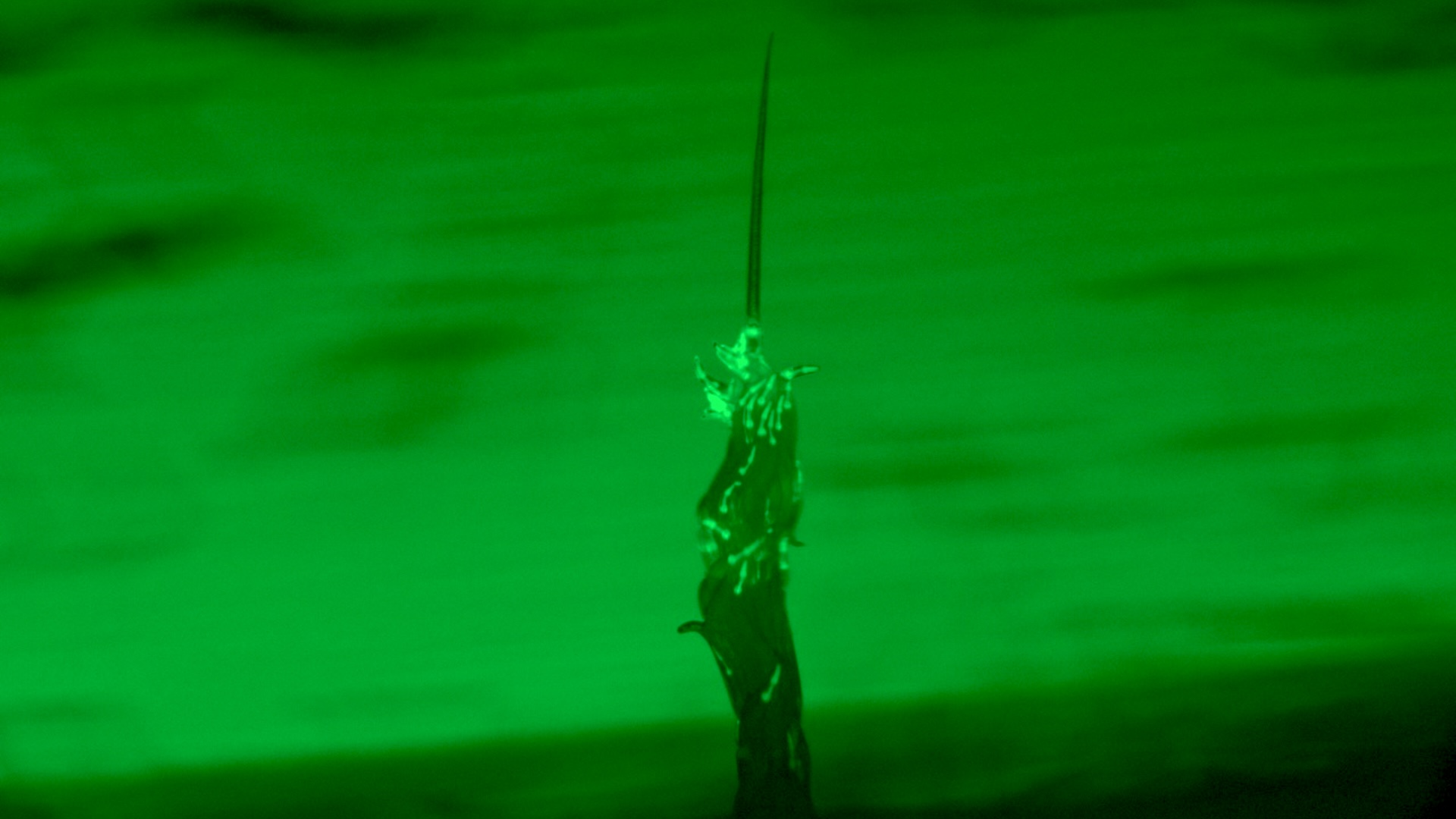Nematodes have been spotted forming writhing towers of tiny worms in the wild for the first time, according to a report in the journal Current Biology.
The bizarre behavior had previously only been observed in experimental settings, thought to be a competitive attempt to escape from the rest of the group. However, new images of these towers forming in the wild hint at a more mutually-beneficial motivation.
The footage was captured by researchers in Konstanz, Germany, on fallen apples and pears at local orchards. The team from the Max Planck Institute of Animal Behavior (MPI-AB) and the University of Konstanz were then able to combine these images with follow-up laboratory experiments to demonstrate that the “towering” behavior happens naturally, and that the worms engage in such behaviour as a means of mass transit.
“I was ecstatic when I saw these natural towers for the first time,” said senior author Serena Ding, group leader at the MPI-AB, describing the moment when co-author Ryan Greenway, a biologist at the University of Konstanz, sent her a video recording from the field. “For so long natural worm towers existed only in our imaginations. But with the right equipment and lots of curiosity, we found them hiding in plain sight.”
That curiosity also revealed some interesting aspects of worm cooperation. While the researchers observed many nematode species crawling inside the fruit, only a single species in the same developmental period — a tough larval stage known as a “dauer” — participated in tower building. That level of species specificity in worm tower “construction” hinted that there might be more driving the behavior than a seemingly random creature cluster.
Related: Nematode resurrected from Siberian permafrost lay dormant for 46,000 years
“A nematode tower is not just a pile of worms,” said study first author Daniela Perez, a postdoctoral researcher at MPI-AB. “It’s a coordinated structure, a superorganism in motion.”
The paper suggested these observations could serve as a “missing link” into behavior of similar organisms. Such towering behavior has previously been observed in slime molds, fire ants and spider mites, but it is still relatively rare in nature.
To see if other kinds of worms could also form such a “superorganism”, researchers created conditions to coach the roundworm Caenorhabditis elegans into assembling into similar structures. C. elegans is a model organism that is widely studied for both its behavior and biology.
Perez stuck a toothbrush bristle into a food-free agar plate to act as a sort scaffold — then unleashed the worms. Within two hours, the C. elegans formed a tower using the bristle as its spine. Some smaller clusters of worms reached out exploratory “arms,” while others bridged gaps between spaces. And when researchers tapped the top of the tower with a glass pick, the worms wriggled toward that stimulus.
“The towers are actively sensing and growing,” says Perez. “When we touched them, they responded immediately, growing toward the stimulus and attaching to it.”
The researchers also wondered if there was some sort of worm hierarchy driving this activity. Did younger worms have to do all the work? Stronger ones? Smaller, weaker ones?
It turns out that the roundworms were remarkably egalitarian in their efforts. Unlike the orchard-based nematodes, the laboratory-bound C. elegans represented a range of life stages, from larval to adult — but they all pitched in. That suggests “towering” may be a more generalized strategy for group movement than previously thought.
“Our study opens up a whole new system for exploring how and why animals move together,” says Ding.
